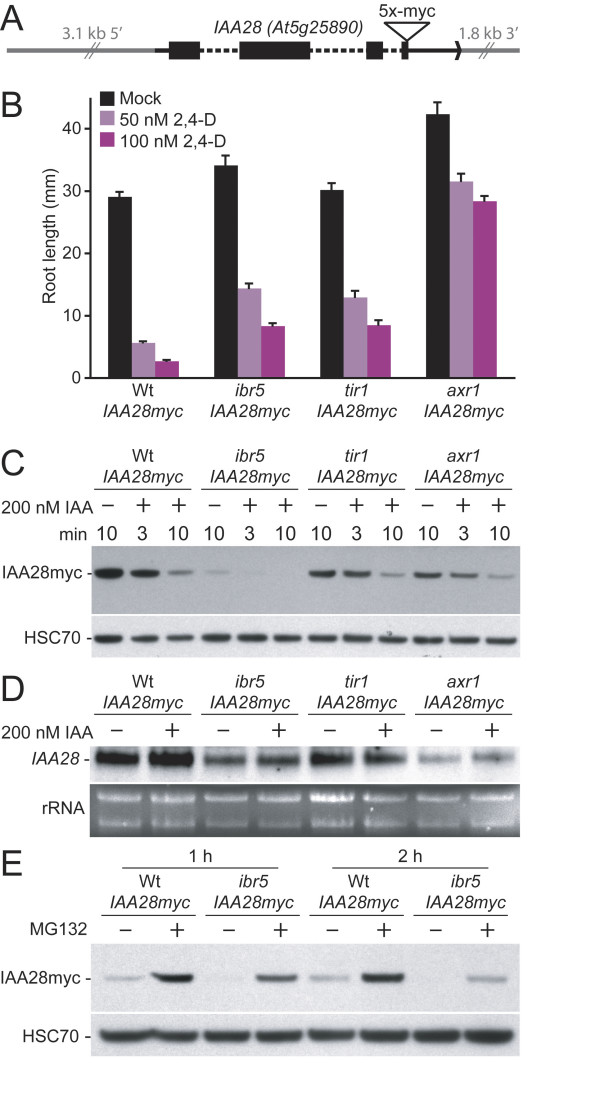Figure 7.
ibr5 does not accumulate IAA28myc. (A) An illustration of the IAA28myc construct. The region of the IAA28 transcript is shown in black, with introns designated with dashed lines and coding sequence with black boxes. (B) Auxin-response defects of indicated mutants carrying the IAA28myc construct. Lengths of primary roots of 8-day-old seedlings grown under yellow-filtered light at 22°C on medium supplemented with the indicated concentrations of 2,4-D are shown. Error bars represent standard errors of the means (n = 17). (C) IAA28myc accumulation in wild type and auxin-response mutants. Anti-myc (top panel; Santa Cruz Biotechnology) and anti-HSC70 antibodies (bottom panel; Stressgen Bioreagents) were used on immunoblots of protein prepared from roots of light-grown 10-day-old Col-0 (Wt), ibr5-1, tir1-1, and axr1-3 seedlings expressing IAA28myc that had been mock (ethanol) treated for 10 minutes or treated for 3 or 10 minutes with 200 nM IAA. (D) IAA28 mRNA accumulation in wild type and auxin response mutants. Total RNA from seedlings that had been mock (ethanol) treated or treated with 200 nM IAA for 10 minutes was separated by electrophoresis (bottom panel, ethidium bromide-stained gel), transferred to a membrane, and probed with an IAA28 probe (top panel). IAA28 and IAA28myc transcripts are not resolved from one another, and therefore are seen as a single band. (E) IAA28myc accumulation in response to MG132 treatment. Anti-myc (top panel) and anti-HSC70 (bottom panel) antibodies were used on immunoblots of protein prepared from 3-day-old light-grown Col-0 (Wt) and ibr5-1 seedlings expressing IAA28myc that had been mock (DMSO) treated or treated with 300 μM MG132 for 1 or 2 hours.

